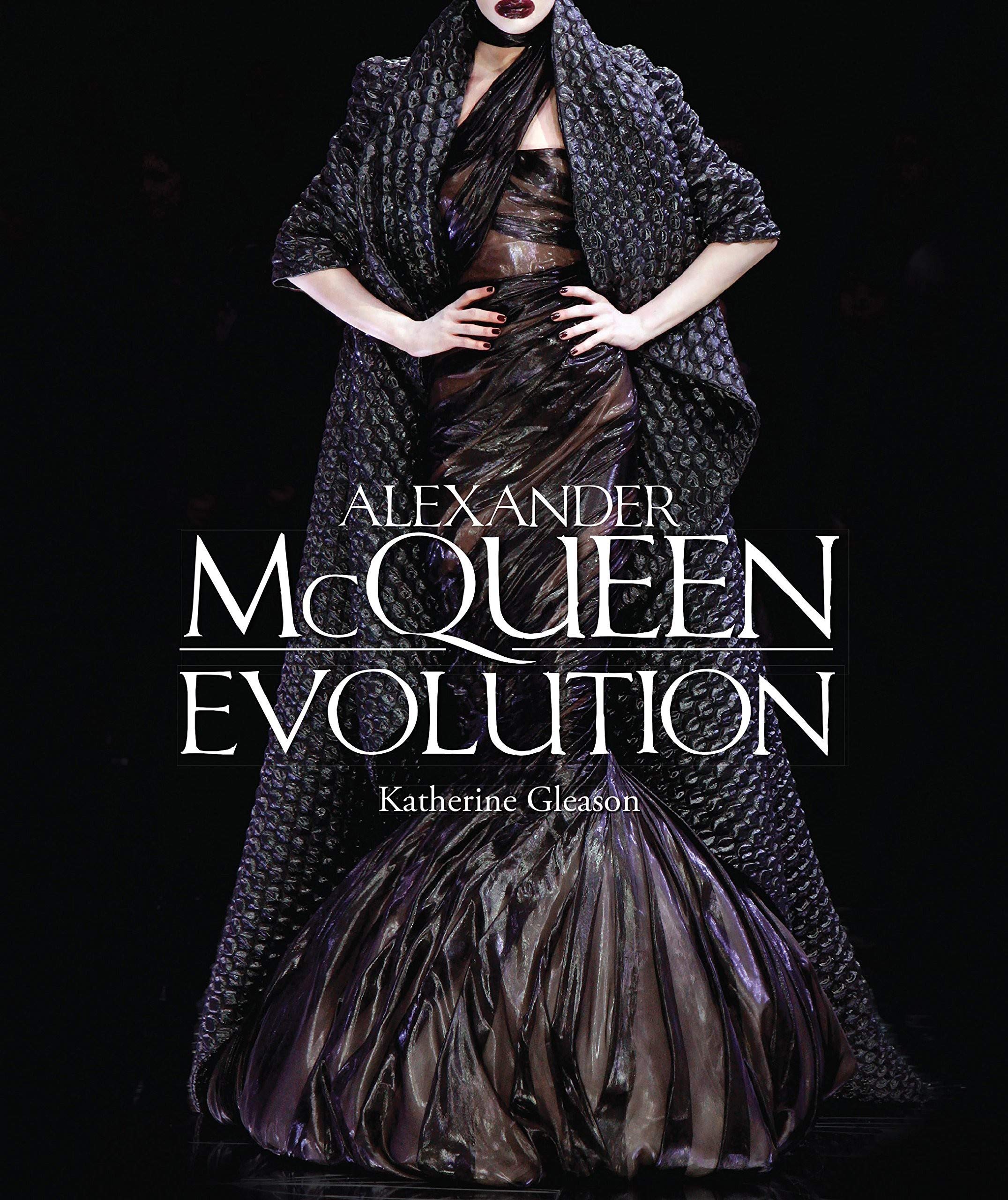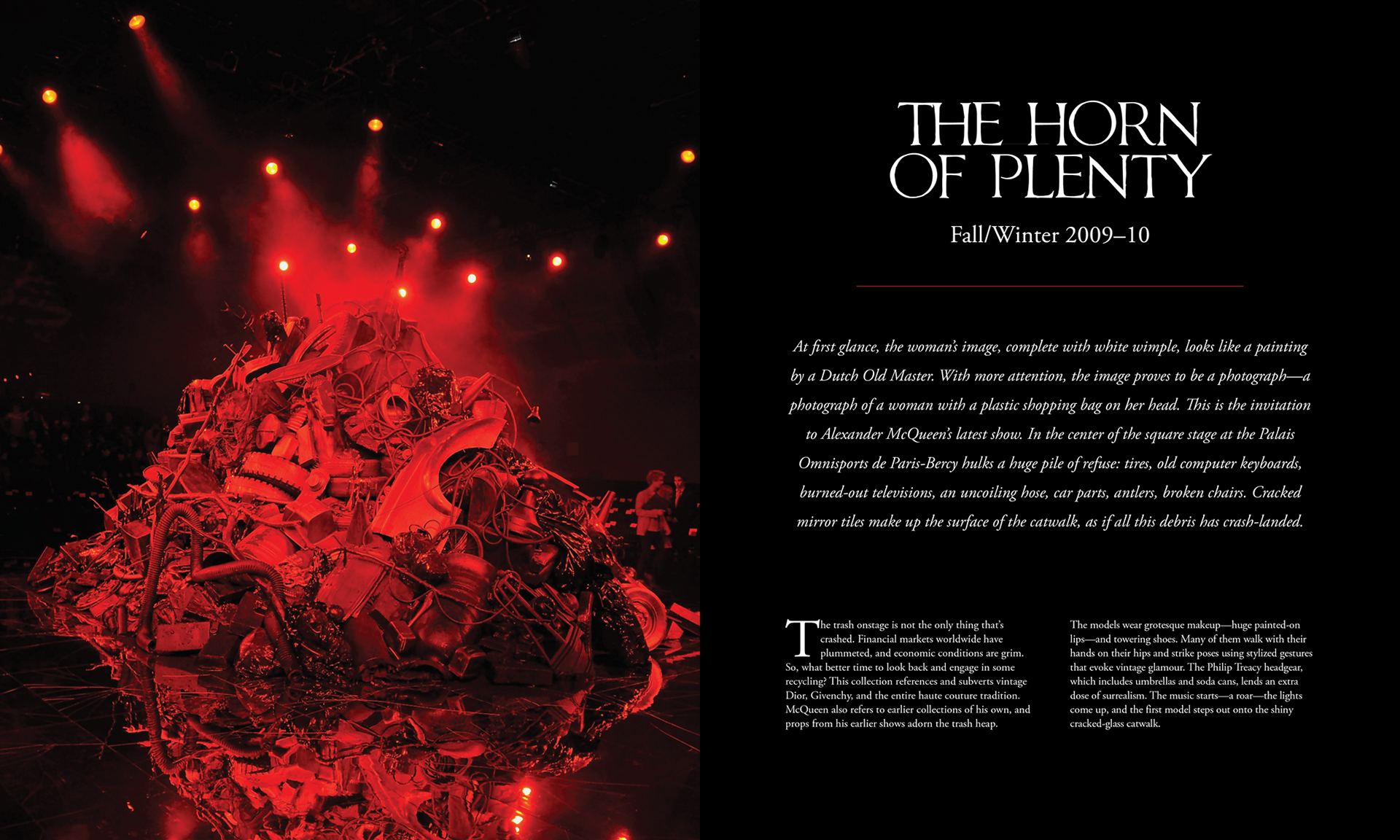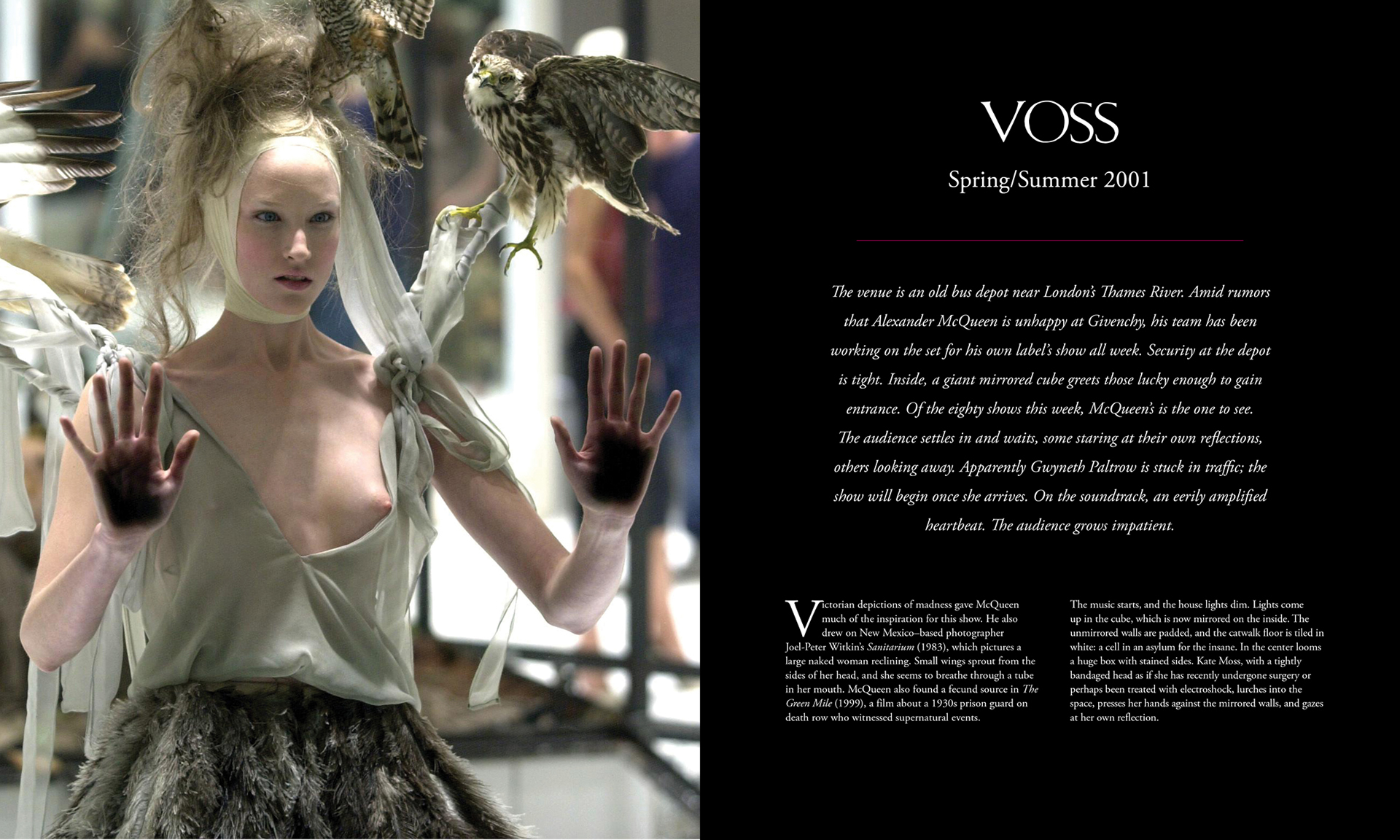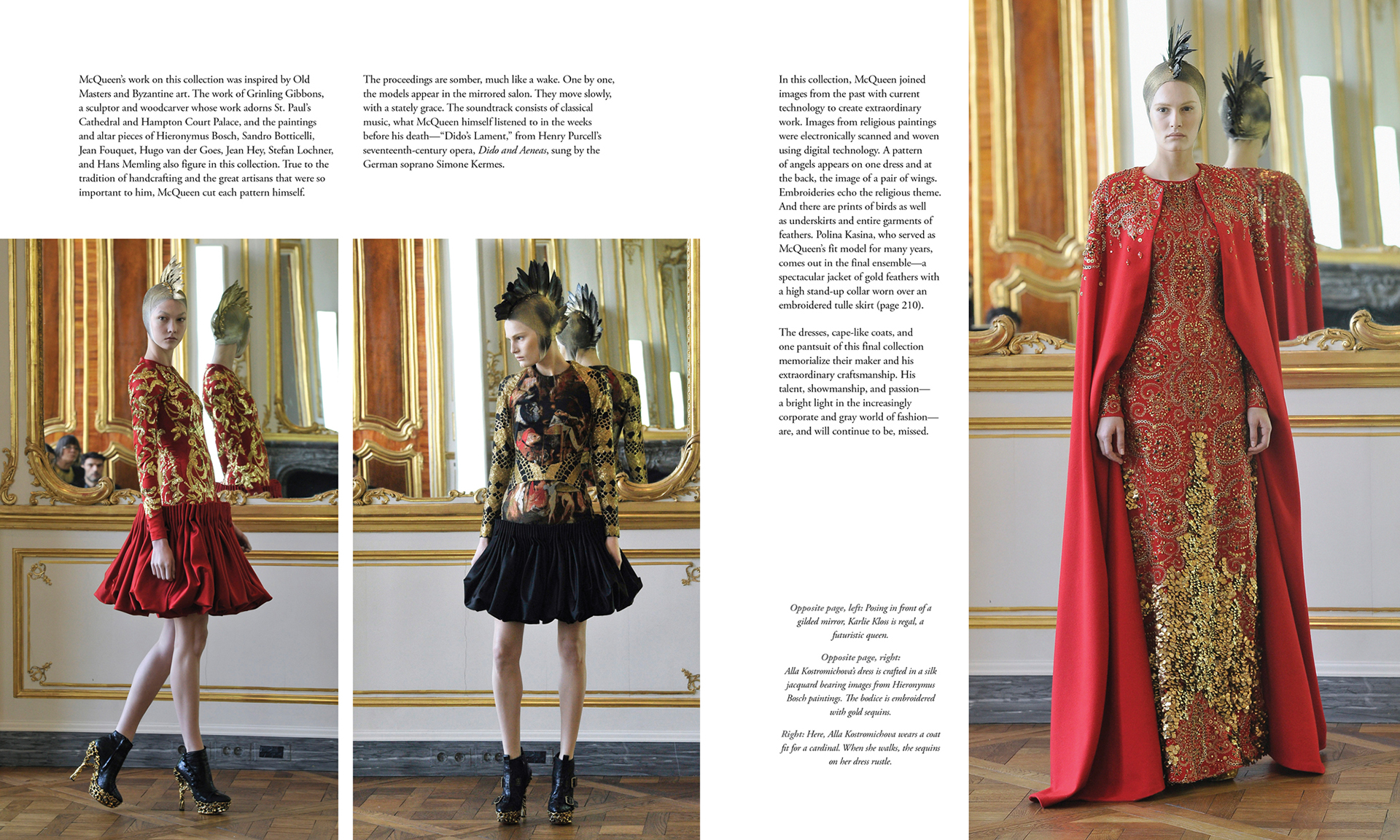Alexander McQueen Evolution by Katherine Gleason
Alexander McQueen Evolution is a book by Katherine Gleason featuring mainly photographs about McQueen’s 35 theatrical and controversial runway shows from 1994 to 2010.

It begins with a brief background of Alexander McQueen on his early life and how he started his fashion world. Stunning photographs from all the collections are accompanied with short explanation on the inspiration and sprinkled with quotations from McQueen and his closed ones. He has always been celebrated for his exquisite tailoring, meticulous craftsmanship and originality in his designs, although often raised controversies. In this book, Gleason tries to paint a picture all the designers’ works in a chronological format with pages mostly black and full of images. Although arguably, the book fails to really encapsulate the grandeur of McQueen’s works in depth that any admirer would want to see. Many have said that the book serves as an introduction or the overview of Alexander McQueen’s world.
From the collection Jack the Ripper Stalks His Victims to the final show Plato’s Atlantis, the readers were made to mesmerised as in you are there in his exhibition or runway shows. McQueen is seen to have taken inspiration for his avant garde basically everywhere, from his Scottish ancestry to the history Yoruba mythology, to the destruction of the environment. Every of his collection was made narrative was showcased with his characteristic of dramatic flair, his dark interpretation on beauty.
The book shows how McQueen meticulously thought about his show’s concept and it was crucial to the development of the whole collection. It discusses the genius behind each show without forgetting to mention the collaborations with other names, like Philip Treacy and Shaun Leane for example. Somehow, this book is like the printed version of Alexander McQueen: Savage Beauty exhibition although in a way simpler version.
Highland Rape was McQueen’s breakthrough collection in 1995 featuring disheveled models smeared with faux blood and in tatters of lace. In 1998’s Scanner, fashion spectators were intrigued to the finale when two robots sprayed paint on Shalom Harlow’s dress on a spinning platform. Then in Voss for Spring Summer 2001, McQueen turned the catwalk into models appearing trapped in a clinical glass box. In Widows of Culloden (Fall Winter 2006), Kate Moss’ appearance as a cameo in hologram background that it took the spotlight.
Through the photographs presented in the book, we could see how intrigued each show was, from models walking through water, pole dancing at a carnival, to performing with trained dancers in a depression era style marathon. In Fall Winter 2009 Horn of Plenty, McQueen dedicated the show to his late mother with models moved around a rubbish pile at the centre of the catwalk. And ini his final presentation, Plato’s Atlantis was when he combined the technology and craftsmanship where the collection was made complex digitally printed — the reptilian, aquatic collection.

Overall, this book serves as a recap with explanatory photographs of McQueen’s works in each of his creation as it nails in bringing out the admiration the grandeur and genius of Alexander McQueen.



